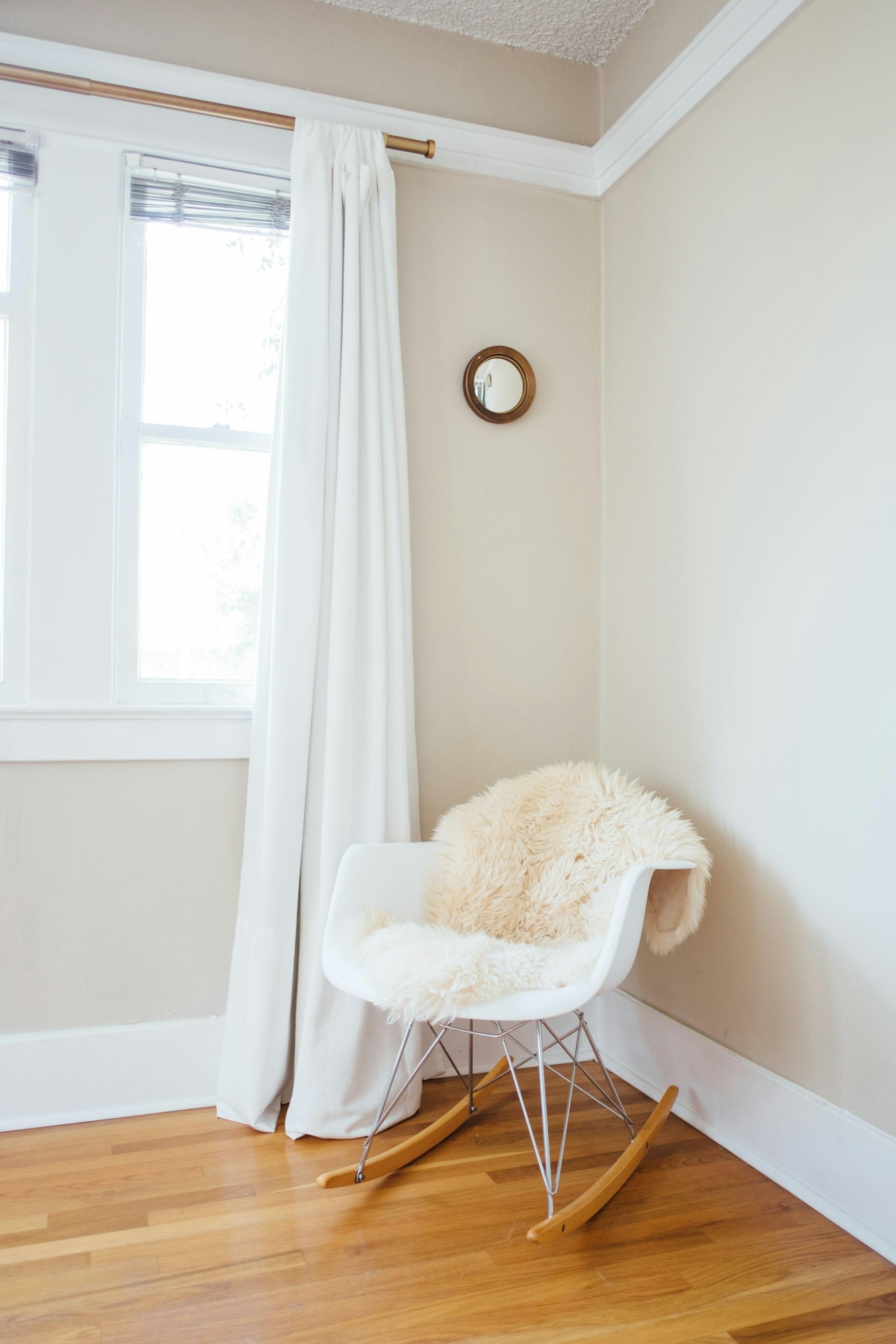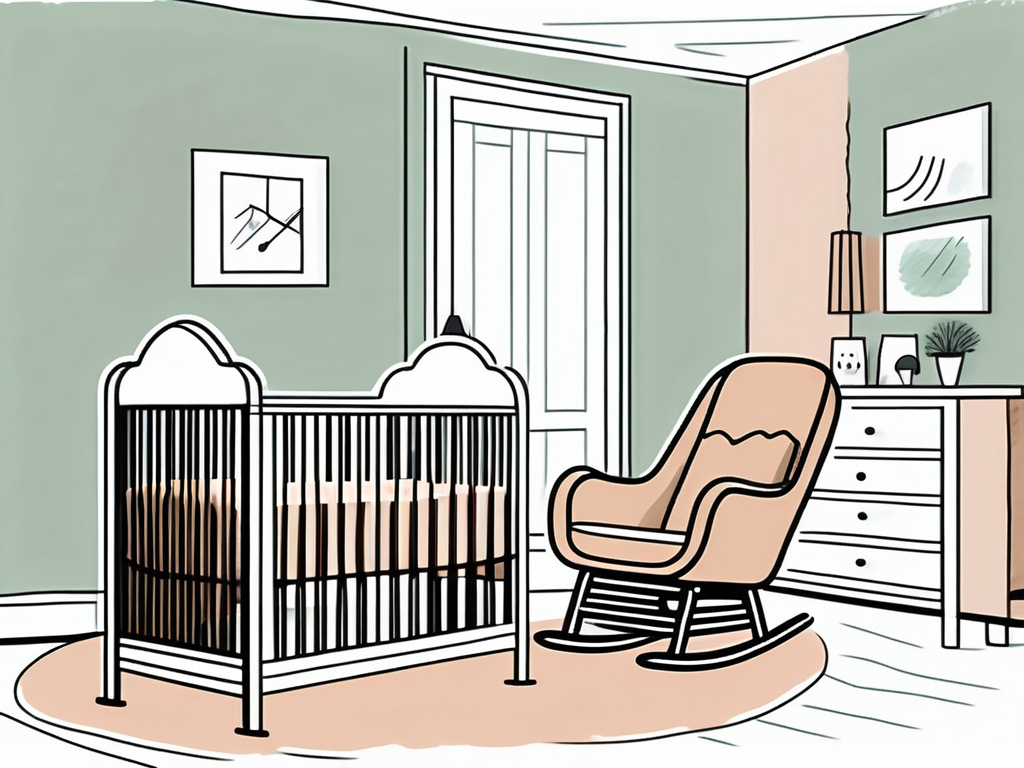Glider vs. Rocker: How to Decide
Trying to choose between a glider and a rocker? Both offer comfort and relaxation, but each has its own unique benefits. Discover the key differences and learn how to decide which is the best fit for your space and lifestyle.

Choosing the perfect nursery seat is more than just picking a chair; it's about creating a haven of comfort and tranquility for both you and your baby. In the world of nursery furniture, gliders and rockers reign supreme, but deciding between the two can feel as daunting as navigating a ship through a stormy sea. Let's embark on a journey to uncover the nuances of each, ensuring your nursery is a lighthouse of calm in the bustling ocean of parenthood.
The Basics of Gliders and Rockers
Before diving into the depths, let's first understand what sets gliders and rockers apart. Both are designed with the ultimate goal of soothing your baby and providing a comfortable spot for feeding, cuddling, and storytime. However, their mechanisms of motion and design philosophies differ significantly.

What is a Glider?
A glider moves in a smooth, horizontal motion, sliding back and forth on a fixed track. This motion is gentle and tends to be quieter, making it a popular choice for late-night feedings and soothing a fussy baby back to sleep. Gliders often come with a variety of features such as locking mechanisms, swivel capabilities, and matching ottomans for added comfort.
Gliders are typically more modern in design, fitting seamlessly into the aesthetic of a contemporary nursery. They're built for comfort, with many models featuring plush cushions and padded armrests, ensuring you're as cozy as your little one during those precious moments together.
What is a Rocker?
Rockers, on the other hand, offer a traditional rocking motion that moves in an arc. This age-old design has been a staple in nurseries for generations, known for its natural, soothing rhythm that can help lull babies to sleep. Rockers often have a more classic look, with wooden frames and the option for cushioned seats.
While rockers can be more affordable than gliders, they may also require more floor space to accommodate their arc motion. The choice between a glider and a rocker often comes down to personal preference, space considerations, and budget.
Comfort and Usability
When it comes to choosing the right nursery seat, comfort and usability are paramount. After all, you'll be spending countless hours in this chair, from feeding sessions to reading bedtime stories.
Evaluating Comfort
Comfort is subjective, and what feels like a cloud to one person might feel less so to another. It's essential to test out both gliders and rockers, if possible, to see which aligns with your comfort preferences. Consider the depth and softness of the cushions, the height of the backrest, and whether the armrests support your arms during feedings.
Also, think about the fabric. Is it soft and cozy? Is it easy to clean? Babies are messy, and choosing a nursery seat with removable, washable covers can save you a lot of headaches.
Usability Features
Look for features that enhance the chair's usability. Does the glider have a locking mechanism to keep it stationary when needed? Can the rocker be easily moved or does it have a stable base to prevent tipping? Additional features like pockets for storing books and toys, or an ottoman for elevating your feet, can make a significant difference in your overall satisfaction.
Consider the ease of assembly as well. You'll likely be putting this furniture piece together in the latter stages of pregnancy or amidst the chaos of welcoming a new baby. A complicated setup process is the last thing you need.

Choosing the Right Material
When selecting a nursery seat, the material it's made of plays a crucial role in both comfort and durability. Opt for fabrics that are soft to the touch and easy to clean. Microfiber and polyester blends are popular choices as they are stain-resistant and can withstand frequent use.
If you prefer a more luxurious feel, consider a nursery seat upholstered in velvet or chenille. These materials add a touch of elegance to your nursery while providing a cozy spot for you and your baby to relax.
Space and Aesthetics
Your nursery is a reflection of your style and the love you have for your little one. The nursery seat you choose should not only be functional but also complement the room's aesthetics.
Space Considerations
Measure your nursery space before making a decision. Gliders might require less floor space since their motion is contained, but they can be bulkier in design. Rockers might need more room to rock back and forth but can be slimmer in profile. Consider the layout of your nursery and how much space you can dedicate to your nursery seat without it feeling cramped.
Also, think about the future. Will the chair be repurposed into another room once it's no longer needed in the nursery? Its design and size should accommodate this transition smoothly.
Matching Your Nursery's Style
Whether your nursery theme is modern chic, classic elegance, or somewhere in between, there's a glider or rocker to match. Gliders tend to lean towards a contemporary look, with sleek lines and minimalistic designs. Rockers can offer a touch of nostalgia, with wooden frames and the option to add a cushion that matches your nursery's color scheme.
Accessorizing Your Nursery Seat
Enhance the functionality and style of your nursery seat by adding accessories that cater to your needs. Consider a nursing pillow for added support during feeding sessions or a cozy throw blanket to keep you warm during late-night cuddles with your baby.
Personalize your nursery seat with decorative cushions that complement your nursery's color palette. Opt for washable covers to make cleaning a breeze and switch up the look of your chair effortlessly.
Maintenance and Longevity
Ensuring the longevity of your nursery seat requires proper maintenance and care. Regularly clean the chair according to the manufacturer's instructions to prevent dirt and stains from setting in. For fabric seats, consider using a fabric protector to repel spills and make cleaning easier.
Checking for Wear and Tear
Inspect your nursery seat periodically for any signs of wear and tear. Loose screws, creaking joints, or fraying fabric should be addressed promptly to prevent further damage. Tighten any loose components and consider reupholstering or repairing worn-out parts to extend the chair's lifespan.
Rotate and flip cushions regularly to distribute wear evenly and maintain their shape. This simple practice can prevent premature sagging and ensure that your nursery seat remains comfortable and supportive for years to come.
Storage and Protection
When not in use, protect your nursery seat from dust and sunlight to prevent fading and deterioration. Consider investing in a breathable cover or storing the chair in a shaded area to maintain its appearance and structural integrity.
If you plan to store the nursery seat for an extended period, disassemble it following the manufacturer's guidelines to prevent damage during storage. Keep all hardware and components organized to facilitate reassembly when needed.
Remember, the best nursery seat is one that feels right for you and your baby, creating a cozy corner for countless memories to be made. Happy choosing!
Before you set sail on your nursery furnishing adventure, anchor your decision with Spoken. Ensure you're getting the best value for your glider or rocker by comparing prices across various retailers with Spoken. Our platform will help you navigate the sea of shopping options, exposing any rebranding undercurrents and guiding you to the most tranquil deals available. Don't let price waves rock your budget; check out products on Spoken and create your perfect nursery haven with confidence.
Quick facts
Is a glider better than a rocker?
Gliders are often better than rockers for smooth motion and comfort, especially for nursing or relaxing, as they glide back and forth rather than rocking.
Does gliding mean rocking?
Gliding differs from rocking; a glider moves smoothly along a fixed track, while a rocker tilts back and forth on curved legs.
Do glider chairs rock back and forth?
Yes, glider chairs move back and forth but on a fixed track, providing a smoother and quieter motion than traditional rockers.
What makes a chair a glider?
A glider chair is defined by its smooth back-and-forth motion on a fixed track, often paired with padded seats for comfort.
What are the advantages of a glider?
Gliders offer smooth, quiet motion, making them ideal for nurseries or relaxation. They often include padded seating and may have matching ottomans.
What are the disadvantages of rocking chairs?
Rocking chairs can be noisier and less stable than gliders, especially on uneven floors. They may also lack the cushioning found in gliders.

Dane Hurtubise
Co-founder & CEO of Spoken
Dane Hurtubise is the Co-founder & CEO of Spoken. He has led two venture-backed companies and is a two-time Y Combinator alum. Prior to Spoken, Dane sold his previous company, Parklet, to Greenhouse Software where he served as VP of Platform and Partnerships. An avid runner, cyclist, and Pilates enthusiast, Dane holds a BS in Electrical and Computer Engineering from the University of Texas at Austin.
Read more